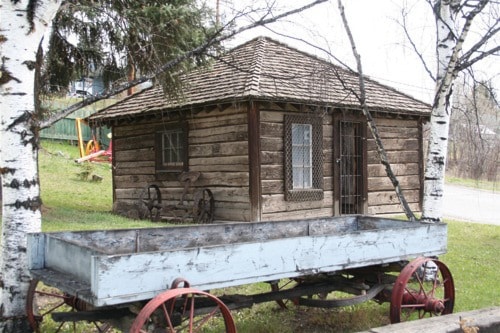Burns Lake has a long and fascinating history.
While First Nations had long inhabited the area before the arrival of any non-natives, European settlers came here during the 19th century. Settlers were brought to the area by the construction of the Collins overland telegraph line. In fact, the engineer responsible for the telegraph trail, American-born Charles Bulkley, was the first non-native man to settle in Burns Lake. This line connected Fraser Lake to Burns Lake and Decker Lake, down the Bulkley River to Hazelton and then up the Kispiox River into the Yukon.
Further settlement followed with the construction of the Grand Trunk Pacific Railway, which was built through the area en route Edmonton to Prince Rupert.
The building of the railway provided easier access for settlers and quickly resulted in numerous new arrivals to the area. Among the new arrivals were prospectors in search of minerals and a small mining operation was quickly started.
Completion of the railroad in 1914 further opened up the area to development. The railroad created a demand for railroad ties and increased access to the area allowing mining and forestry to develop. This resulted in the commencement of commercial forestry activities in the region, attracting many permanent settlers.
Over the years, settlers continued to arrive which reached another high in the early 1950’s, when the Aluminum Company of Canada (Alcan) started the construction of an aluminum smelter in Kitimat.
However, the man credited for founding Burns Lake is Barney Mulvaney. Mulvaney started a tent town, which evolved over the years to become the Village of Burns Lake.
Barney is considered one of Burns Lake’s most prominent and colorful historical figures. He was a saloon, gambling den owner and operator, enterprising trapper and packer, and mail and passenger service operator. The gambling den seen here is known locally as the Bucket of Blood. The building was given its sinister name after a shooting incident took place over a poker game. The building still stands today and is part of the Burns Lake Walking Tour featuring Heritage Buildings and Points of Interests.
To learn more about Barney Mulvaney visit the Burns Lake Museum. In fact, a visit to the museum provides the best way to gain an understanding and appreciation of the unique and vibrant history of Burns Lake. The museum is conveniently located on Hwy. 16 next to the Visitors’ Information Centre.
For more information contact the Lakes District Museum at 250-692-7450. Hours are 9 am to 4:30 pm Mon to Fri.
